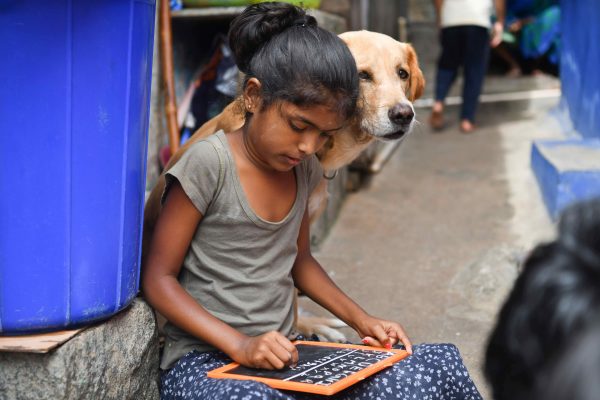The right to education was legislated in India in 2009. A declining poverty rate, expanding school infrastructure and changes in social attitudes have increased enrolments over the last decade. A number of initiatives have been key to pushing numbers up, including the Swachh Bharat Mission, a national sanitation and hygiene program. It contributed to the doubling of schools with boundary walls and usable toilets. In 2008, more than 20 per cent of 15–16 year old girls were not enrolled, declining significantly to 13.5 per cent in 2018. And in 2018, for the first time, the dropout rate for females was lower than males at the primary and secondary level.
The COVID-19 pandemic is challenging the critical progress that has been achieved. Up to 10 million girls are at risk of dropping out of secondary school due to the pandemic.
Widening gender inequality and increasing poverty is placing female education at greater risk. The gender parity index value — the ratio of girls to boys in education — had long been less than one. In the last couple years, it has equalised, but the pandemic has increased poverty, reversed migration and job losses — risking school dropouts, particularly for vulnerable girls.
Girls are at greater risk of being deprived of their education as they are pushed towards paid and unpaid labour as well as child marriage in times of crisis. It is likely that many adolescent girls who stop going to school during the pandemic will never return.
Populous states such as Bihar, Madhya Pradesh, Uttar Pradesh and Rajasthan have lower female literacy rates than the national average. The risk of girls dropping out during pandemic and ending up in early marriage, pregnancy, trafficking, and violence is higher in these states.
In Bihar, a lack of school infrastructure has meant longer travel distances to attend school. In Bihar’s poorer regions, the state government had provided bicycles to girls. This led to good results as the number of girls registering for school increased from 175,000 to 600,000 in four years. But now schools have been closed for over a year and re-registering those from rural areas is set to become a major challenge.
As the new school session begins in July, the government should collect gender segregated data from village councils in rural areas. The change in school enrolments for girls should be carefully tracked. Online education will likely continue for some time, potentially limiting the value of education, and parents who have become used to having their daughters home may not want to send them back to in-person study. Gathering better data about enrolments would help inform the strategies and kinds of action needed to reach out to girls at risk of dropping out.
Home visits by educational representatives including teachers to motivate girls to re-register could be one such approach. Scholarships and cash transfers is another that would make a difference in keeping the poorest girls in school.
The caste system has always been a factor that deters school education for children coming from marginalised communities. Over 50 per cent of Dalit children drop out of school. The female enrolment ratio for scheduled castes has always been low. Providing these families with the monetary means for enrolment will bring more children back to school, and the greatest impact would be felt by females on the edge of dropping out. Educational aids and counselling may also be required.
Midday Meal, a school-based lunch program, was designed to increase enrolments in the spirit of universal access to education. The program has been particularly effective at boosting female enrolment. Over the course of the pandemic, the government issued food security allowances for children forced to study at home. Yet a performance audit has indicated that children still do not receive food at home in some states. It is critical to bring children back to school not just for their educational needs but also for their health and nutritional needs.
Many children missed out on education during the pandemic because they did not have access to online educational resources. Yet the pandemic has made it possible to develop new real-time online education models. The government should increase funding for research into viable online education models, particularly for poor girls in remote rural areas. Digitalisation could present breakthroughs for the future of equal education in India.
Girls’ education is an important factor in economic development — numerous studies have demonstrated that GDP increases with female education. A reversal of India’s progress will bring long-term adverse developmental impacts unless greater action is taken.
Monika Chaudhary is Associate Professor of Strategy and Finance at IIHMR University, Jaipur and Associate Faculty at Bloomberg School of Public Health, Johns Hopkins University.

